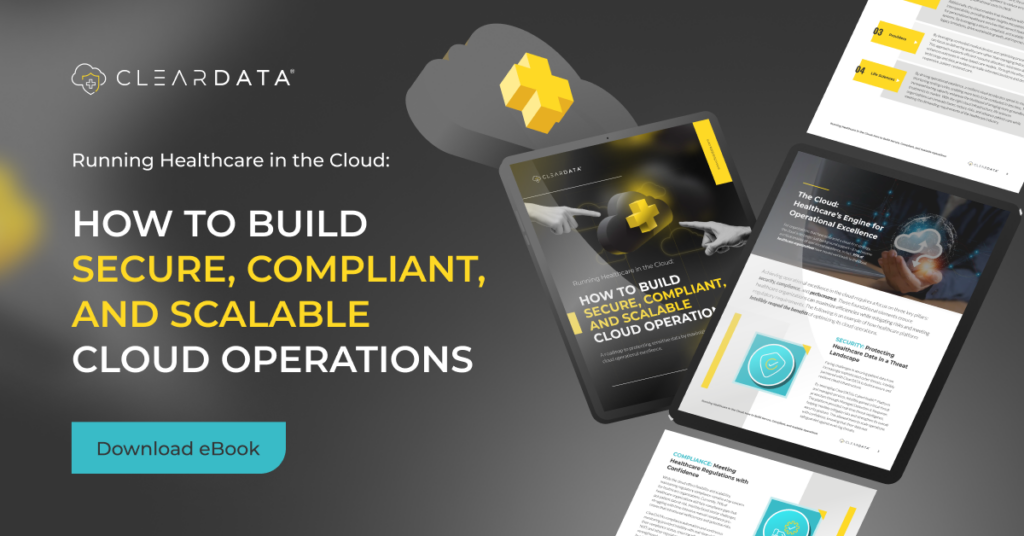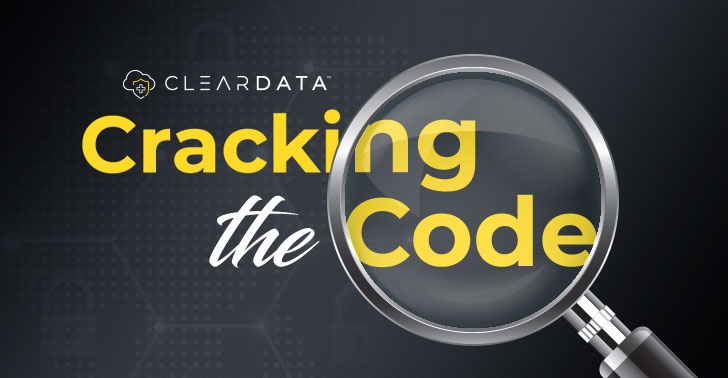Cloud Security for Healthcare Payers: Challenges, Risks, and Solutions

Healthcare payers face a mounting challenge in securing sensitive information while meeting rigorous compliance standards. The rise of sophisticated cyber threats and complex regulations are driving healthcare payers to adopt innovative solutions that secure patient health information (PHI) while maximizing operational efficiency.
For many payers, adopting cloud-based security solutions presents both unique challenges and significant benefits. They must balance safeguarding sensitive healthcare data in the cloud with enhancing the patient experience and driving innovation for better patient outcomes.
The Unique Challenges Healthcare Payers Face
1. Protecting PHI Across Hybrid and Multi-Cloud Environments
Healthcare payers manage massive amounts of sensitive data, including PHI, financial records, and claims information. However, as operations expand across hybrid and multi-cloud environments, safeguarding this data from breaches becomes increasingly complicated. Misconfigurations, insider threats, and advanced cyberattacks amplify the risks. Compromised PHI not only jeopardizes patient privacy, but can also result in significant legal and financial consequences, eroding payer trust and credibility.
2. Managing Third-Party Risks
Payers rely on third-party administrators (TPAs), cloud providers, and other vendors, each with varying levels of security maturity. This patchwork of security postures creates vulnerabilities and increases exposure to potential breaches.
3. Addressing the Cybersecurity Skills Gap
Hiring and retaining cybersecurity talent remains a significant barrier across the healthcare industry. This skills gap makes it difficult for payers to implement and maintain advanced security frameworks, and adopting innovations like AI, particularly in cloud environments.
Operational inefficiencies and increased reliance on outdated and reactive security strategies leave potential vulnerabilities unaddressed.
4. Compliance Complexity
Navigating federal (HIPAA, HITECH), state, and industry-specific regulations is a daunting task, especially in the face of a growing cybersecurity skills gap. Frequent updates, such as new HITRUST certification standards, place additional pressure on already stretched compliance teams. Failure to meet compliance mandates can result in penalties, costly audits, and legal action, alongside reputational harm.
The Benefits of Adopting Cloud-Based Security Solutions
Healthcare payers are increasingly turning to cloud-based platforms to address these challenges. Here’s why this shift makes sense.
1. Scalability to Match Evolving Needs
Cloud platforms provide unmatched scalability, allowing payers to expand or adjust resources as their data and network demands grow. With healthcare payers managing rising volumes of claims data and PHI, this flexibility is invaluable. A payer can quickly scale up security resources during peak enrollment periods or after an acquisition, ensuring performance remains robust without compromising security.
2. Real-Time Threat Detection and Response
Advanced cloud-based solutions leverage machine learning and artificial intelligence to deliver real-time threat intelligence, detect anomalies, and respond to incidents swiftly. This proactive approach minimizes system downtime and mitigates breaches before they spiral into full-blown crises.
3. Enhanced Compliance Automation
Cloud platforms designed for healthcare come equipped with automated compliance enforcement tools that support frameworks like HIPAA, HITRUST, and SOC 2. This feature significantly reduces the burden on internal teams while ensuring continuous regulatory adherence.
Example: Compliance-as-code capabilities enable seamless integration of security controls into infrastructure, eliminating manual audits prone to error.
4. Third-Party Risk Mitigation
Many cloud solutions offer continuous monitoring tools for third-party vendors, ensuring mutual accountability. APIs and integrations streamline secure data exchange while maintaining tight restrictions on access and usage. Additionally, security questionnaires and tools like SOC 2 Type II certification offer transparency into vendor practices, instilling greater confidence in shared responsibility models.
5. Cost Efficiency and Resource Optimization
The cloud eliminates the need for substantial investments in on-premise data centers and infrastructure. By transitioning to cloud-native security solutions, payers can optimize IT budgets while redirecting resources toward patient care initiatives.
Checklist for Selecting a Cloud Security Partner
Selecting the right cloud security provider is crucial for healthcare payers aiming to minimize risks and maximize operational efficiency. Here’s how your payer organization can effectively choose the right partner to innovate in the cloud.
Align Cloud Security with Long-Term Goals
Before diving into specific solutions, start by defining your organization’s long-term innovation and business goals. What are your growth goals?
- Improve member digital experience?
- Grow member footprint?
- Enhance operational efficiency?
- Reduce healthcare costs?
- Increase member retention and satisfaction?
Identify how cloud security can support your strategy, whether it’s enhancing patient care, improving operational efficiency, or ensuring rigorous compliance. A clear vision ensures that your cloud security investments align with your broader objectives and provide sustainable value for your members.
Seek Industry-Specific Expertise
Partner with cloud security providers who specialize in healthcare security. They should fully understand payer data flows, workloads, and compliance intricacies such as HIPAA and HITRUST mandates.
Evaluate Real-Time Monitoring and Reporting Tools
Ensure any potential platform offers robust tools for ongoing threat detection and compliance monitoring. Features like dashboards and automated alerts keep compliance and security teams informed at all times.
Verify Certifications and Shared Responsibility Models
Look for certifications such as HITRUST and SOC 2 Type II for vendors. Clear delineation of responsibilities between your organization and the provider is essential for avoiding compliance gaps.
Prioritize Zero Trust Architecture
Zero Trust frameworks, which enforce least-privilege access policies and regular identity verification, have become the gold standard for securing cloud environments.
Assess Vendor Responsiveness and Support
Reliable customer support, including access to managed service providers (MSSPs), can significantly ease the transition to cloud security and ensure ongoing stability.
Leverage Vendor Ecosystems and Toolsets
Evaluate platforms that offer inheritance programs for compliance, such as HITRUST inheritance within a multi-cloud environment. Many organizations offer security solutions across different industries, but it’s crucial to choose a partner with expertise specifically tailored to healthcare. Ensure they have the skills to keep Protected Health Information (PHI) secure and compliant within the cloud.
Secure Your Cloud with ClearDATA
Cloud technology is improving healthcare IT operations, strengthening data security, and enhancing the patient experience. As more organizations embrace cloud solutions, it’s important to recognize that simply moving to the cloud isn’t enough to unlock its full potential.
ClearDATA partners with healthcare payers to simplify and strengthen cloud security, blending automation, managed detection and response, and ongoing compliance monitoring. With ClearDATA’s healthcare-specific solutions, payers can confidently handle PHI and other sensitive data across public cloud platforms, knowing they’re backed by policies and technologies built for HIPAA, HITRUST, and other regulatory demands.
With ClearDATA, your healthcare organization gains a trusted partner that’s committed to protecting data and enabling innovation as the industry evolves.
FAQ
What should healthcare payers look for when selecting a cloud security partner?
Key considerations include:
- Healthcare-specific expertise in compliance frameworks like HIPAA and HITRUST
- Real-time threat detection with AI and machine learning
- Zero Trust architecture for access control
- Proven certifications such as SOC 2 Type II
- Vendor ecosystem with healthcare-focused integrations and compliance inheritance programs
What are the biggest cloud security challenges for healthcare payers?
Healthcare payers face challenges such as securing Protected Health Information (PHI) across hybrid and multi-cloud environments, managing third-party risks, addressing the cybersecurity skills gap, and meeting complex compliance requirements like HIPAA, HITECH, and HITRUST. Misconfigurations, insider threats, and sophisticated cyberattacks make these risks even greater.
How can AI improve cloud security for healthcare payers?
AI-powered security solutions deliver real-time threat detection, anomaly detection, and automated incident response. For healthcare payers, AI can reduce the time to detect and respond to threats, proactively identify vulnerabilities, and automate compliance checks—ensuring HIPAA and HITRUST requirements are met without overburdening internal teams.
How do healthcare payers manage third-party cloud security risks?
Payers should require vendors to maintain certifications like SOC 2 Type II and HITRUST, implement continuous monitoring, and follow a shared responsibility model. Tools such as API integrations, automated vendor assessments, and Zero Trust frameworks further reduce the risk of third-party breaches.
ClearDATA is your trusted healthcare multi-cloud security, compliance, and operations partner.


